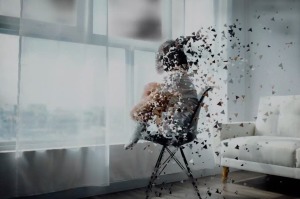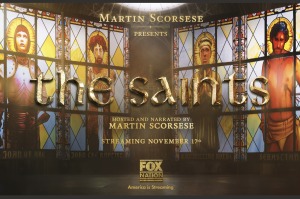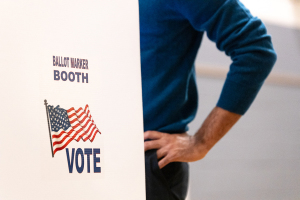Radiation From the Shroud of Turin a Clue to Jesus' Resurrection?
CHARLOTTE, North Carolina – Radiation and various blood stains found on the Shroud of Turin may be possible clues that the cloth is not a forgery and is indeed evidence of the resurrection of Jesus Christ, offered Gary Habermas, distinguished research professor and chair of the Department of Philosophy and Theology at Liberty University, on Friday during a presentation at Southern Evangelical Seminary's 20th annual Christian Apologetics conference.
Habermas, who has been lecturing on the topic since the 1970s, reminded the audience of a number of interesting discoveries that scientists have been able to make about the Shroud, but refused to make any definitive statements on whether this is indeed the authentic burial robe of Jesus Christ.
One of the discoveries based on enhanced images of the Shroud presented is that the person's teeth were showing through the skin – possible signs of the resurrection for those who believe that the man is indeed Jesus Christ.
"His skin is intact, his beard is intact, but you are able to see what's inside coming out, just like if you are able to see what's on the back of a hand," Habermas said during the presentation, while showing a photo of an exposed human skull juxtapositioned next to the head of the man in the Shroud, with the teeth from the two images aligned.
"This is one of the best indications that the man in the Shroud, who was dead and was crucified, (has) radiation coming out," he said of the teeth discovery. "And if that's what this is, you've got something from the inside (coming out).
"(The teeth) are on the inside, but on the photo they are showing outside. Whichever way (the radiation) is coming, it dragged the image from the inside to the outside."
Several members of the audience remarked that the radiation coming out of the body could be seen as evidence of the resurrection, if the man is indeed Jesus.
Much has been written about the Shroud of Turin in recent years, especially following new tests and research on the world-famous burial robe, which is kept at the Cathedral of Saint John the Baptist in Turin.
While radiocarbon tests conducted in 1988 in Arizona, Oxford and Zurich seemed to argue that the Shroud is a forgery created in the Middle Ages, somewhere between 1260 and 1390, attempts to replicate the relic in 2011 by Italy's National Agency for New Technologies, Energy and Sustainable Development came to the conclusion that such a feat could not have been accomplished by the technology available at that time.
"The double image (front and back) of a scourged and crucified man, barely visible on the linen cloth of the Shroud of Turin, has many physical and chemical characteristics that are so particular that the staining ... is impossible to obtain in a laboratory," the Italian scientists offered.
Further radio carbon dating tests conducted in early 2013 by Padua University scientists established that the Shroud was likely made somewhere between 280 B.C. and A.D. 220, which is around the same time many Christians believe Jesus walked on Earth.
Pope Francis also spoke out on the relic during an Italian TV Easter Saturday special, saying that it "speaks to the heart," though he stopped short of declaring the piece an official relic.
"This disfigured face resembles all those faces of men and women marred by a life which does not respect their dignity, by war and violence which afflict the weakest … And yet, at the same time, the face in the shroud conveys a great peace; this tortured body expresses a sovereign majesty," the Roman Catholic Church leader said.
Habermas, who specializes in research into the resurrection of Jesus, argued that some things are widely accepted about the Shroud, namely that it is indeed a number of centuries old; that it is definitely not a painting, and there are no traces of dyes or pigments; the blood stains have been verified to be authentic; and that the cloth measures a little over 14 feet long, and is over 3 and a half feet wide.
The research professor presented a slide of a 16th century painting of Christ showing remarkable resemblances to the imprints on the Shroud, and examined some of the oddities in it.
Enhanced images seemingly show that the beard is angled a little bit to the left than straight through the center of the face, and that it has a small indent in the middle. While some believe that the image suggests the man in the Shroud had a short beard, Habermas argued that the indent is actually a blood stain, and that the beard extends further down than the image suggests.
Many of these characteristics were present in the 16th century painting, and even other paintings dating back to 6th century B.C.
"The point of this is to say there was a Shroud; they knew what it was, and they had an image of it after the 16th century," he said.
"I'm not saying that the Shroud face is Jesus, I'm saying that the guy who (composed the painting) thought it was Jesus' face."
The research professor also looked into other enhanced photos of the back and front of the Shroud, which showed blood samples of impalements at the feet, one in each wrist, on the beard, on wounds on the head – as well as marks suggesting that the man may have carried something heavy on his back.
According to Habermas, scientists can also tell other details from the enhanced photos, including the weapons the man might have been beaten with, causing the back wounds – and they can even tell that one of the people who beat him was taller than the other one, and one was left handed.
Furthermore, traces of dirt on the man's feet, which have been subjected to chemical analysis published in a peer-reviewed secular chemistry journal, were noted to be from a species of limestone that is found almost exclusively in Jerusalem.
"So if you're making things up with the body of some dude that you crucified to make him look like Jesus, and you put the Shroud over him – why go back to Palestine to look for dirt that nobody could see?" he added.
Habermas insisted at the end of his presentation that he cannot be sure whether the Shroud of Turin is the actual burial robe of Jesus Christ or not, but said it is an important artifact that researchers can definitely learn more from.




























